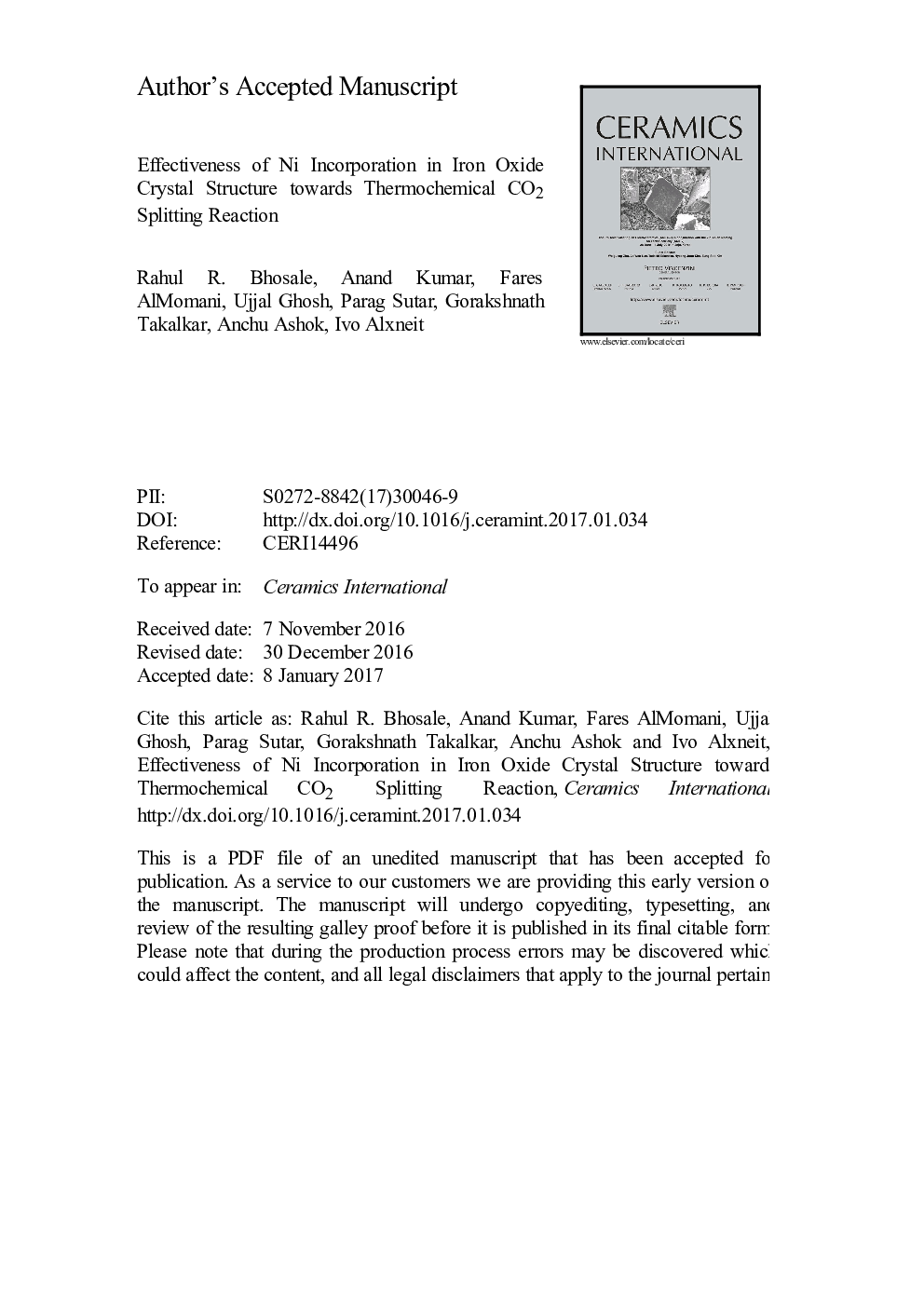| Article ID | Journal | Published Year | Pages | File Type |
|---|---|---|---|---|
| 5438652 | Ceramics International | 2017 | 23 Pages |
Abstract
In this study, Ni-doped iron oxide (NixFe3âxO4) materials were synthesized via the 1,2-epoxypropane assisted sol-gel method by varying the molar concentration of Ni from x=0.2 to 1. Sol-gel derived NixFe3âxO4 gels were dried and the dried powder was further calcined upto 600 °C in air for 90 min. Obtained calcined NixFe3âxO4 powders were further analyzed to determine the phase composition, crystallite size, specific surface area, pore volume, and morphology via powder X-ray diffraction (PXRD), BET surface area analysis (BET), as well as scanning and transmission electron microscopy (SEM and TEM). The obtained results in the synthesis and characterization section indicate formation of NixFe3âxO4 nanoparticles with high specific surface area. Thermal reduction and re-oxidation of the sol-gel synthesized NixFe3âxO4 materials were determined by using the high temperature thermogravimetry. Obtained results indicate that the amount of O2 released during the thermal reduction step (at 1400 °C) and quantity of CO produced during the CO2 splitting step (at 1000 °C) increases as the concentration of Ni inside the iron oxide crystal structure increases. The highest amounts of O2 released (221.88 μmol/g) and CO produced (375.01 μmol/g) in case of NiFe2O4 (NF10 material).
Related Topics
Physical Sciences and Engineering
Materials Science
Ceramics and Composites
Authors
Rahul R. Bhosale, Anand Kumar, Fares AlMomani, Ujjal Ghosh, Parag Sutar, Gorakshnath Takalkar, Anchu Ashok, Ivo Alxneit,
